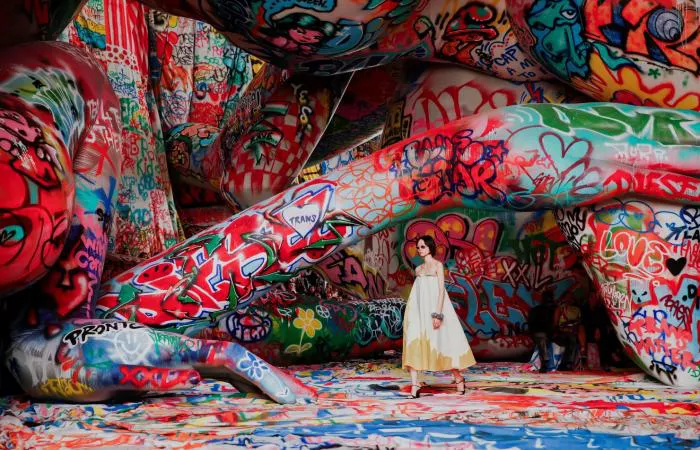This season’s Milan Fashion Week became a battleground between tradition and rebellion, as designers grappled with an industry in flux. Against a backdrop of economic uncertainty, shifting consumer demands, and rapid leadership changes, the Fall-Winter 2025 collections revealed a stark divide: some brands doubled down on heritage, while others threw caution to the wind.
Radical Reinvention
At Prada, co-creative directors Miuccia Prada and Raf Simons traded their signature precision for deliberate dishevelment, deconstructing femininity with asymmetrical hems and raw-edged tailoring. “Liberation comes with risk-taking,” Simons declared backstage. “You cannot innovate without breaking rules.”
Versace took a similarly defiant stance, with Donatella Versace channeling her late brother Gianni’s archives—reimagining Medusa motifs and Baroque flourishes as inflated puffball skirts and 3D-printed gowns. Show notes urged: “Be yourself. Believe in yourself. Break the rules. ” (Rumors of a potential sale to Prada Group loomed, though the brand declined to comment.)
Even Tod’s, under Matteo Tamburini, championed “authentic elegance that follows no rules,” while Giorgio Armani literalized the gamble, adorning suits and gowns with playing-card motifs. “Dressing is always about taking risks,” read his show notes.
The Safe Bets
Not all embraced upheaval. Gucci, left without a creative director after Sabato De Sarno’s abrupt exit, presented a “greatest hits” collection—horsebit loafers, Tom Ford-era suiting, and Alessandro Michele’s quirk—framed as a “continuum of craft.”
At Fendi, Silvia Fendi marked the brand’s centenary with a retrospective-meets-reboot, enlisting her grandsons to open the show. “The archive is unavoidable, but celebration means moving forward,” she said, nodding to Karl Lagerfeld’s aversion to nostalgia.
Newcomers also played it safe: Alberta Ferretti’s Lorenzo Serafini stayed true to romantic draping, while Moschino’s Adrian Appiolaza reined in theatrics but kept the brand’s eccentric core.
Theatrics and Turbulence
Performance art stole the spotlight. DSquared2 enlisted rapper Doechii and Naomi Campbell for a runway concert, while Dolce & Gabbana turned Milan’s streets into a catwalk. Bottega Veneta, awaiting new designer Louise Trotter’s debut, hosted Patti Smith for a haunting spoken-word set.
An Industry at a Crossroads
The week’s scattered trends—fringe, frayed seams, exaggerated shoulders—reflected a broader uncertainty. “You never really have an answer; you just push forward,” admitted Simons.
In a talk with Vogue’s Anna Wintour, Donatella Versace lamented commerce stifling creativity: “If you try to please too many managers, creativity dies.”
As Milan closed, one message rang clear: in fashion’s high-stakes game, the boldest players refuse to play safe.
Related topics:

